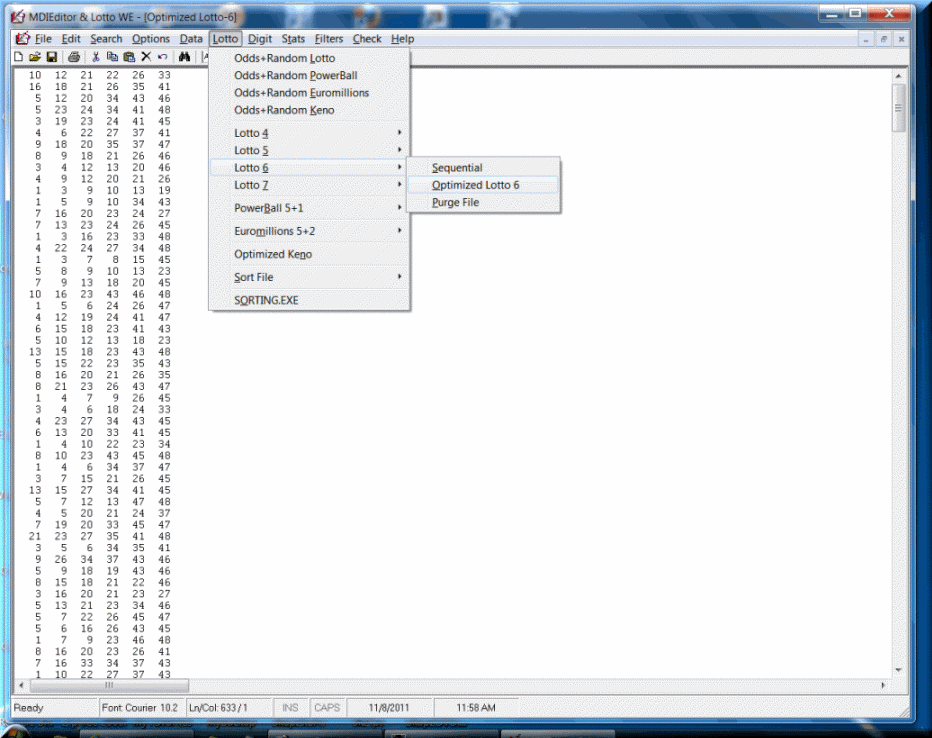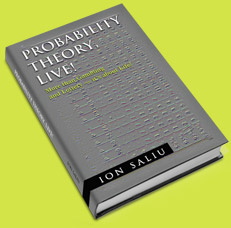
Average Losses for Lottery Numbers in Total Drawings, House Advantage, Edge
By Ion Saliu, ★ Founder of Lottery Mathematics



The average loss, in lottery and casino gambling alike, is determined by multiplying the total cost by the house advantage (HA or house edge).
The cost consists of number of tickets played multiplied by the price per ticket.
To calculate the house advantage (HA), we apply this simple formula based on units paid UP over total possibilities TP:
For example, in the pick 3 game, they pay 500 units (e.g. dollars) for a straight win. Total straight sets (possibilities): 1000. HA = 1 – (UP / TP) = HA = 1 – (500 / 1000) = 50%. That's humongous! It's about 10 times worse than what the player faces in American roulette: 5.26%.
If one played 10,000 dollars (one pick-3 number in 10,000 lottery drawings), the average loss would amount to 5000 dollars. If playing, randomly, one pick 3 straight set in 100,000 lottery drawings, virtually every number (straight set) will end up very close to a 50,000-dollar loss.
I doubt there are 100,000 lottery drawings in any state lottery. But we can reduce to scale. Instead of 3 digits, we look at data for one digit only; e.g. the digit in the 1st position. In other words, we derived a new game, a pick 1 lottery game. Total possibilities are now 10. To maintain the same HA, we assume the house pays 5 units per win.
The data available for this game analysis is huge now: over 9000 drawings in my database (in Pennsylvania State Lottery). I run my one-of-a-kind statistical software known as Frequency Rank. I am interested only in the positional frequency, as this hypothetical game has only 1 digit. Here is the report:
The Pick-3 Digits Ranked by Frequency - By Position
File: PA-3
Drawings Analyzed: 9000 | Date: 08-03-2017
Frequency norm based on probability: 10%
Rank Position 1 Position 2 Position 3
Digit Hits % Digit Hits % Digit Hits %
1 7 961 10.68% 5 931 10.34% 6 940 10.44%
2 4 949 10.54% 1 924 10.27% 7 927 10.30%
3 2 938 10.42% 8 913 10.14% 5 925 10.28%
4 0 926 10.29% 0 897 9.97% 0 908 10.09%
5 3 884 9.82% 9 896 9.96% 1 897 9.97%
6 5 883 9.81% 3 895 9.94% 8 895 9.94%
7 6 872 9.69% 6 895 9.94% 3 883 9.81%
8 1 872 9.69% 4 888 9.87% 9 883 9.81%
9 8 869 9.66% 7 885 9.83% 2 878 9.76%
10 9 846 9.40% 2 876 9.73% 4 864 9.60%
You notice, every digit appeared with a frequency very close to the norm: 1/10 or 10%. A few numbers came out with a little better frequency, while others performed just below par. Each and every digit, however, ended up a loser money-wise.
Looking at the digits in the first position, the digit 7 was the best performer with 961 wins. Total winnings: 961 * 5 = 4805. Loss: 9000 – 4805 = 4195. The digit 9 was the worst performer: 846 wins. Total winnings: 846 * 5 = 4230. Loss: 9000 – 4230 = 4770.
You saw in the roulette report that some of the numbers ended up as winners (in the straight-up bet). No doubt, I exposed that the particular roulette wheel in the Hamburg Casino was seriously biased (they replaced it later). The lottery drawing machines are less prone to bias, as they are not nearly as complicated mechanisms as the roulette wheels.
We saw that also the lottery machines "favored" some digits over others. There are a few percentages above the norm for some digits. The norm calculates that each digit (in this pick-1 game) should hit 900 times in 9000 "drawings". The best performer, the digit 7 came out by 961 / 900 = 6.8% better than the norm. That "percentage advantage" is still a far cry from the house advantage of 50%. Meanwhile, a 6.8% bias in roulette does beat the HA of 2.7 or 5.3%!
The degree of certainty is very high that the numbers will come out with different frequencies. There will always be discrepancies measured in percentages. In games like roulette, some discrepancy percentages will be high enough to make a profit for the gambler who played those particular numbers. In lottery, however, that phenomenon will never occur. The positive discrepancies always come in small percentages; the house edge is always too high. The greedy lottery commissions could cut down the house edge to 25% — and they would still make an indecent amount of money!
The results above were computed for one ticket play. Adding more lottery tickets adds to the cost and total loss. Again, in roulette, playing more numbers can still make a profit for the gambler.

 Read Ion Saliu's book: Probability Theory, Live!
Read Ion Saliu's book: Probability Theory, Live!
~ Founded on mathematical discoveries, also applied to creating strategy, systems in lottery software, lotto jackpot games.

Ion Saliu sings Federal Lottery on YouTube:

Home | Search | New Writings | Fundamental Formula | Odds, Generator | Contents | Forums | Sitemap
